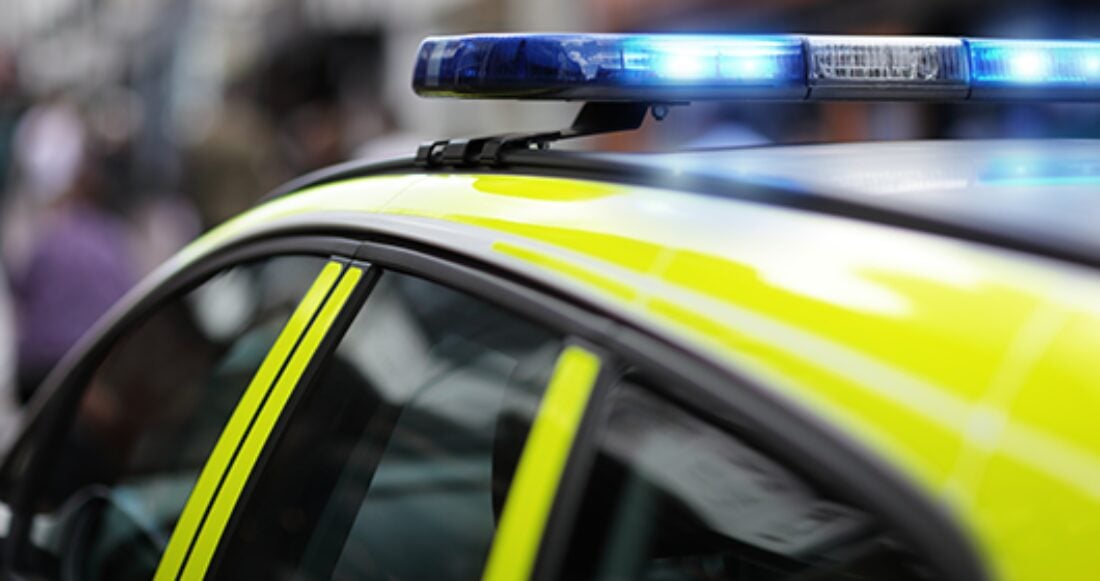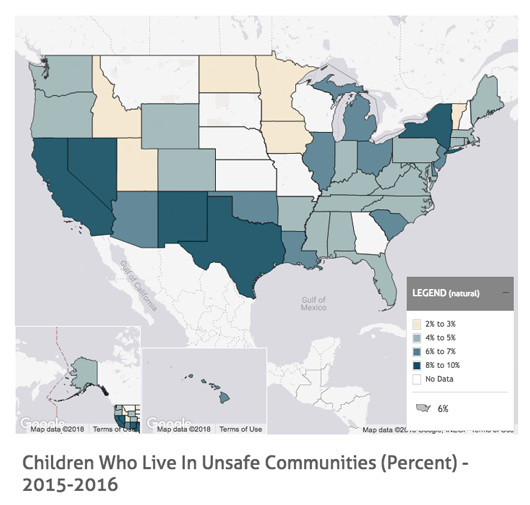Unsafe Communities a Reality for Millions of U.S. Kids

In 2015–2016, 6% of children — 4.4 million kids total — lived in communities perceived unsafe by their parents.
The likelihood of children living in neighborhoods considered unsafe by their parents varies by state. Rates dip to a low of 2% in North Dakota and Minnesota and climb five times higher — to 10% — in California and New York.
Race and ethnicity also make a difference. African-American and Latino children are three times more likely than their white peers to feel unsafe in their home community, while Asian and Pacific Islander children are twice as likely to feel this way.
All children should live in safe, supported neighborhoods — and the research explains why. Compared to their less fortunate peers, kids who feel safe in their hometowns have stronger connections with family, friends and the community. These children are more engaged in after-school programs, volunteering and sports, and they tend to perform better in school and in life.
At the same time: Living in an unsafe neighborhood can disrupt and detract from a child’s healthy development. Families who live in unsafe neighborhoods experience higher rates of infant mortality and low birthweight babies. Unsafe environments are also linked to higher rates of juvenile delinquency, academic failure, child abuse and neglect.
Access more family and community data on the KIDS COUNT Data Center:







